Organic Lawn Goes Blue
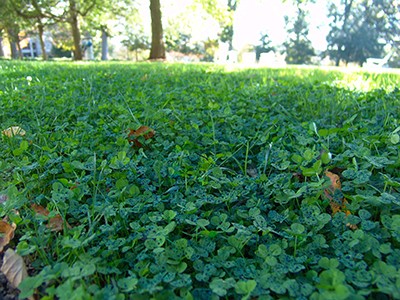 Perhaps you noticed patches of blue grass in front of Parrish and Clothier Halls last fall. No, that’s not what the famed “bluegrass” turf species looks like. The unusual color came from a dye mixed into a mineral-based herbicide.
Perhaps you noticed patches of blue grass in front of Parrish and Clothier Halls last fall. No, that’s not what the famed “bluegrass” turf species looks like. The unusual color came from a dye mixed into a mineral-based herbicide.
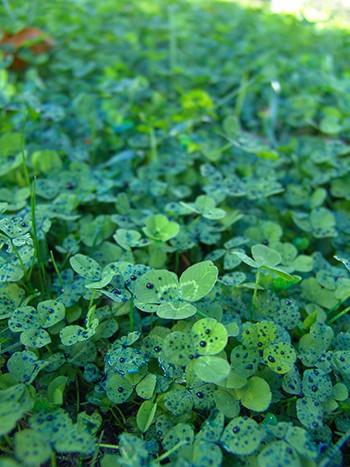
Mineral-based herbicide was applied to suppress some aggressive patches of white clover. photo credit: R. Robert
It was applied to suppress some aggressive patches of white clover. Prior to this treatment young turfgrass seedlings were planted among the white clover. This herbicide application allows the turfgrass seedlings to develop the size and maturity needed to compete on their own.
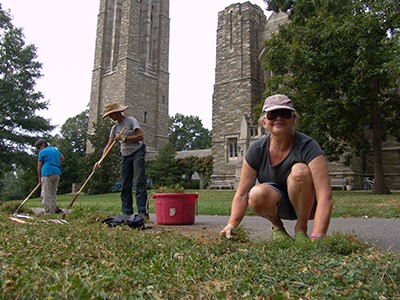
As a general rule, I address perennial weeds by hand digging, then dropping grass seed in the hole. photo credit: R. Robert
Anyone who has worked with me should have been indoctrinated to the fact that grass seed is the best weed control. Any product– organic or not– has risks and drawbacks. As a general rule, I address perennial weeds by hand digging, then dropping grass seed in the hole. And I expect routine overseeding by tractor to steadily crowd out annual weeds, while their seeds are prevented from germinating by landing in a dense stand of grass. Products are several rungs down in my line of weed defense.
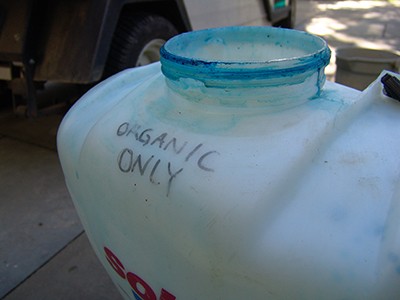
I utilized a product called Fiesta, whose active ingredient is chelated iron and is generally considered to be “low-risk,” although it is not OMRI approved. photo credit: R. Robert
In this case, however, I utilized a product called Fiesta, whose active ingredient is chelated iron and is generally considered to be “low-risk,” although it is not OMRI approved. The organic lawn team sprayed the dense clover patches with this product, then seeded the area.
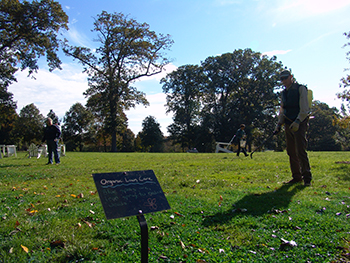
Temporary signage helps teach visitors about the organic practices we employee to maintain the lawn. photo credit: R. Robert
Where clover re-grew alongside the delicate grass seedlings, we re-sprayed about a week later. We also followed up with more “scratch and seed” by hand anywhere that didn’t have a strong new crop of grass.
But why the blue dye? Imagine zig-zagging across a lawn with your head down, concentrating on spritzing clover with the mosaic of species. When you lift your gaze, you’ll be grateful to have that indicator of where you have been and where you have yet to treat.





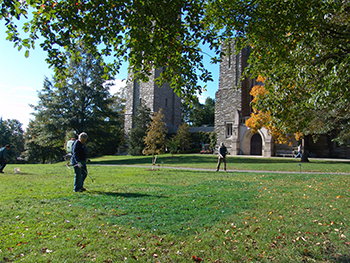
No Comments